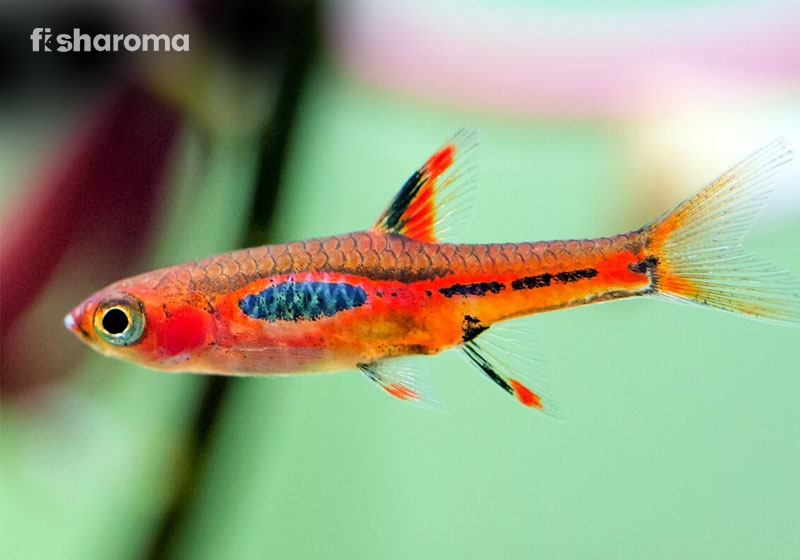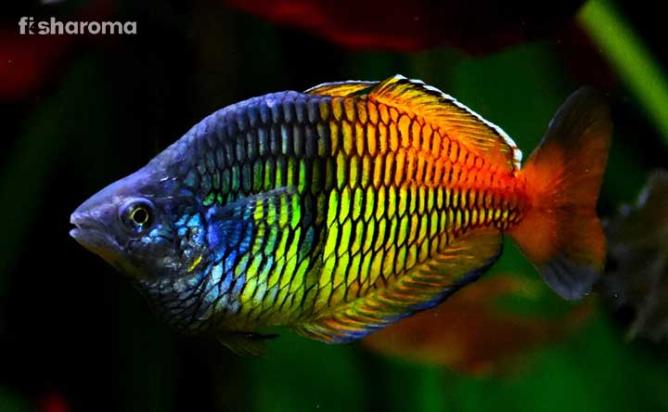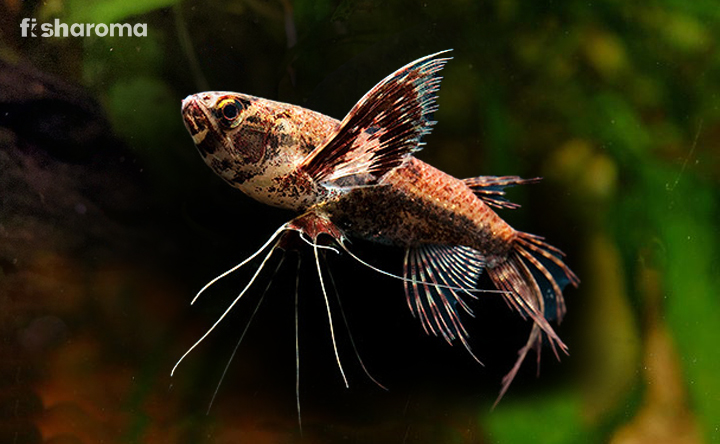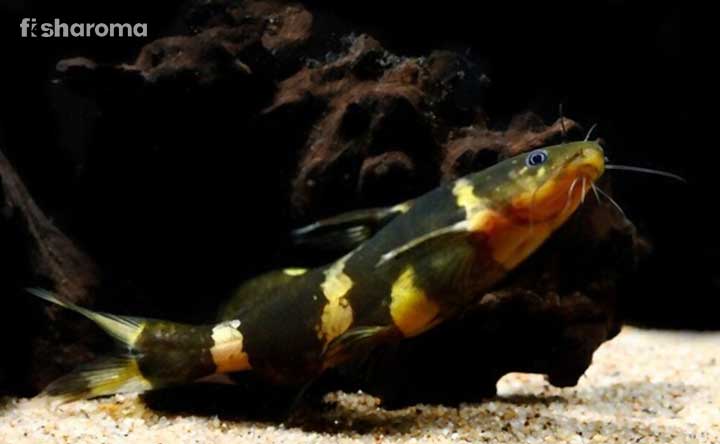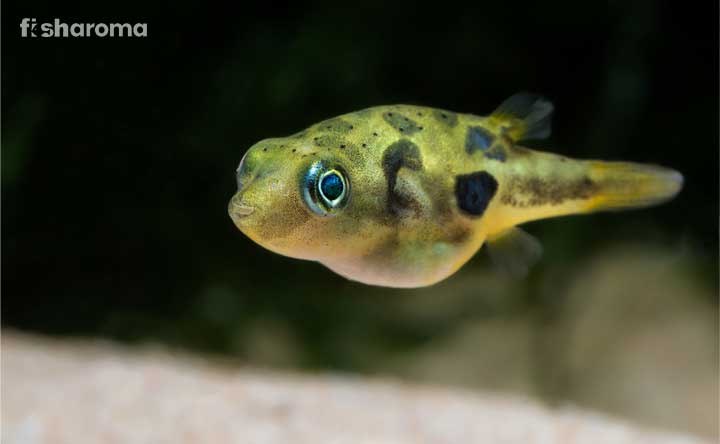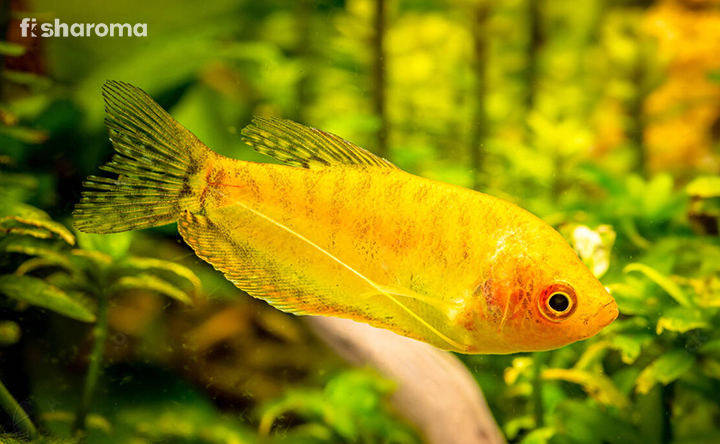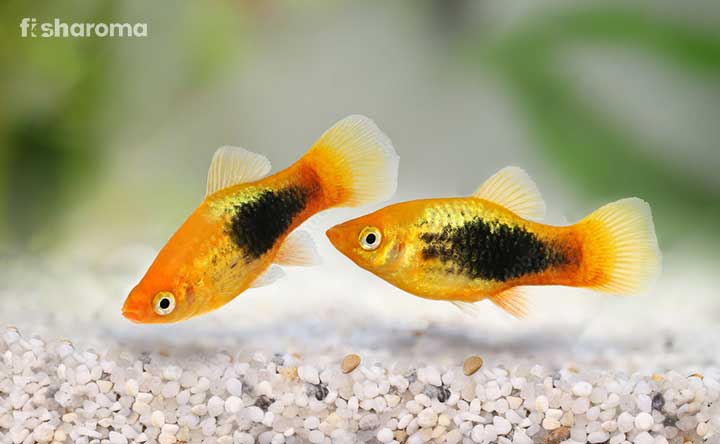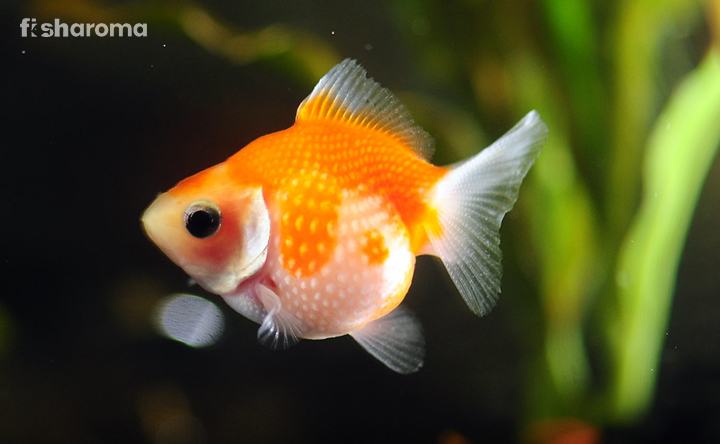An All-inclusive Cardinal Tetra Care Guide
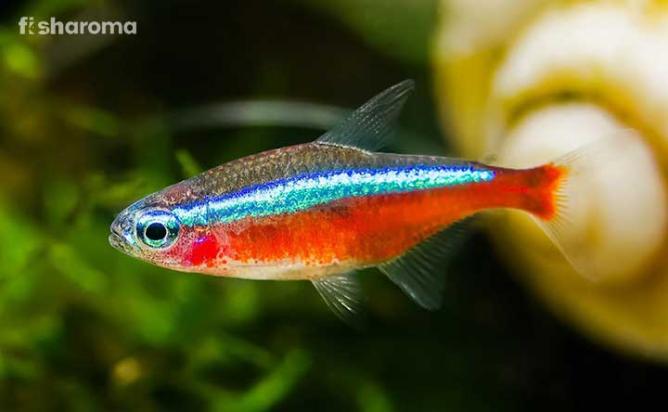
- Origin & Habitat of Cardinal Tetra
- Appearance of Cardinal Tetra
- Behaviour of Cardinal Tetra
- Lifespan of Cardinal Tetra
- Diet of Cardinal Tetra
- Tank Requirements for Cardinal Tetra
- Water Type for Cardinal Tetra
- Compatibility of Cardinal Tetra
- Breeding of Cardinal Tetra
- Diseases of Cardinal Tetra
- Summary
Cardinal Tetra, also known by the names of Large, Red or Roter Neon Tetra as they look a lot similar to Neon Tetras. The neon variant is a well-known aquarist favourite, for its flexibility in the tank. Similarly, the cardinal variant is just slightly bigger in size, naturally another aquarist favourite for its striking similarity with the latter. It is an extraordinary fish breed with vibrant colour composition and contrasts. It is very appealing, as the exquisite stripe pattern of neon-blue colour, over the radiant red base, is an absolute treat to one’s optic nerves.
They are an aquarist favourite for a reason. Not only they are quite compatible in the tank, but they are also easy to look after. They are small fishes who prefer peace and approximately, up to six of them can be kept in an average-sized tank at a time. As easy as it is to be impressed by the ease of this breed, it still needs some structural guidance. Let us help you with that, and put it all in one place for you. We present to you an all-inclusive care guide for this beautiful species of Cardinal Tetra, and run you down on all you need at hand to have these beauties in your tank.
Key Specifications
Before you start with the article, here goes a few key elements you must keep a look-out for, to get a detailed idea of what you are about to deal with:
| Family | Characidae |
| Origin | Venezuela, Brazil and Colombia. |
| Lifespan | About 4-5 years. |
| Colours/Patterns | Blue stripes on a red body. |
| Temperament | Peaceful |
| Size | Up to 2 inches. |
| Diet | Omnivore/ Omnivorous |
| Compatibility | Mostly compatible. |
| Care Level | Easy |
| Reproduction | Egg-layer |
| Difficulty | Easy |
| Water type | Freshwater (not cold) |
Overview
Scientifically known as Paracheirodon axelrodi, these fishes look exquisite. The richness in their colour composition and pattern is like no other. It is very eye-catching, the radiant red base colour surrounding the body with a stroke of blue, dividing the body into a clean half. It is truly a treat to see one, glorifying the aesthetic and beauty of your aquarium.
Origin and Habitat of Cardinal Tetra
South America is their place of origin, starting all the way from the riverbeds of the Orinoco River, to the tributaries of the Amazon River, known as the Rio Negro tributary. It is found in sections of north Brazil, particularly Manaus, and in the western half, it has also been discovered in parts of western Colombia.
Cardinal Tetras are fast swimmers, and require an open swimming space. They are mostly discovered swimming upstream in canopies. Their natural habitat particularly consists of tributaries, or creeks of shallow magnitude, or flooded regions of the forest. These Cardinals are freshwater fishes who tend to exist in groups, and are mostly compatible with multiple circumstances. These fishes like their water to be crystal clear, and some nice cover of vegetation. They resort to flora for hiding purposes; as a defence mechanism against potential predators.
Appearance of Cardinal Tetra
Like their famous cousin, known as the Neon Tetra, they are extremely pulchritudinous beings. Their exquisite colour contrast and serendipity is something extremely fascinating. They really glorify the ambience and outlook of your aquarium as a whole.
Colour
If by most default means we are trying to express the colour, they have a red all-over body colour with distinct blue stripes all over. Since the Cardinal Tetra and the Neon Tetra look so strikingly similar, here goes a few ways you can tell them apart:
| Cardinal Tetra | Neon Tetra |
| The stripe starts all the way from head region, to full length of the body. | The stripe starts from the middle of the body. |
| Comparatively larger in size. | Comparatively smaller in size. |
| Require pH lower than 6.0. | Require pH ranging from 6.0-6.5. |
| Water hardness below 4 dGH. | Water hardness from 5-10 dGH. |
There is a distinct difference between the two genders of Cardinal Tetra as well. Here are some unique features which separate the two:
| Female Cardinal Tetra | Male Cardinal Tetra |
| They have a rounder belly. | They have a more slender body. |
| No similar or specific characteristic or whatsoever. | They have a hook that appears to stick out from the anal fin. |
Size
The Cardinal Tetras are not very big fishes, growing just about 2 inches or 5 cm when they are fully grown. They can survive just fine in pairs or groups, or in small tanks of just 10 gallons.
Behaviour of Cardinal Tetra
As mentioned, we are familiar with the flexibility, and easy nature of the Cardinal Tetras. They are not the most demanding of species. They can survive as long as they are kept under suitable conditions and honestly, it is not hard at all. They prefer to exist in groups and, as many as six of them can be kept together under aquarium conditions. The tetras are usually seen swimming together either in the upper, or middle layers of the tank.
They are peace-loving beings who are comfortable, and are max confident around their own kind. It is generally not recommended to keep them alone, as it might stress them out. If they are stressed out and shy due to isolation, they will lose colour. Their behaviour mostly shows positives making them a wonderful addition to your aquarium.
Lifespan of Cardinal Tetra
They can safely be stated under the category of an average lifespan, or even towards the short. They only live for about 5 years, which is not really that long. If they are not taken care of, or even isolated, opposing their nature, they will lose colour or get unwell. The diseases would result in cutting their lifespan even shorter. Proper food, on-time breeding and suitable conditions are necessary for their survival.
Diet of Cardinal Tetra
They are not very difficult to feed, as they can survive on most available tropical options in the menu for fishes. One should just keep this in mind, the food needs to be made small enough to fit the Tetra’s mouth.
As they are omnivorous in nature, here is the list of a few things they can consume:
- Worms
- Small crustaceans
- Dried flakes or fish pellets
- Blood-worms
- Brine shrimp
Tank Requirements of Cardinal Tetra
They are not very complicated to care for, so here are a few must-dos in the tank you must follow in order to care for them:
Tank Size
They can survive in tanks of just about 20-30 gallons. They do not require big tanks, and can survive with ease in small or compact ones.
Substrate
They mostly appear to prefer water bodies like narrow rivers or streams. A lot of vegetation must be present surrounding that area. In any case, they can survive under most conditions. Moving forward, fine sand is a very good applicable substrate.
Filter
Aquarium filters like the internal ones, with biological in-built filtration, works just fine. The water is recommended to keep at a slow to a normal pace, it best emulates their natural habitat, which is slow streams.
Ornaments
They like partially shadowed regions where there is some light. The lighting is not bright enough but, is fairly distributed as a result of the filter by floating plants. Floating plants, not too many are perfect for them as, it allows some light to pass through, but not quite.
Lighting
They are fine with a little lighting, they in fact prefer slight lighting penetrating through a layer of vegetation.
Presence of Flora
They prefer medium vegetation as they prefer hiding, especially from potential threats. It is in their nature.
Cleaning method
They do not require a strictly disciplined regular cleaning, but the tank must be kept clean from time to time, to prevent any diseases from spreading and infecting these precious beings.
Water Type of Cardinal Tetra
Water type or water profile is one of the most important things, when, it comes to the survival of Cardinal Tetras. Especially in the aquarium scenario, water type is one of the most important aspects. The water type falls under the procedure of emulation of their natural habitat.
Cutting to the chase, being a freshwater breed there are a few things you must keep in mind before adding these exquisite tetras to your aquarium:
| Temperature | 23-27 Degrees Celsius |
| pH | 4.0-6.0 |
| Hardness | 4 dGH and dH of 2-10 |
| Mineral | No specific needs. |
Temperature
A temperature range of 23 to 27 Degrees Celsius is a must. The water in their natural habitat is usually towards the warm end of forest canopies. Under tank situations, it is our recommendation to main this range, although, they can survive in slightly different parameters. It is still recommended to be as accurate as possible and not hamper the quality of care.
pH level
A pH of 4.0-6.0 must be maintained for the sake of quality care. To keep the levels stable and optimum prevents stress and keeps the cardinals healthy.
Hardness
It is recommended to keep the hardness below 4 dGH and dH of 2-10 degrees.
Mineral
Although, the other tetras might have mineral requirements. The common calcium or phosphorus to absorb through their gills, the cardinal tetras do not have any specific needs.
Compatibility
They are extremely compatible with most peaceful fishes of similar size. Fitting pretty well in a peaceful community, these fishes do not cause many inconveniences or hassle when it comes to sharing the tank.
Suitable Tank Mates of Cardinal Tetra
They are compatible with most species. It is an upside of this breed or similar tetras in general. Their situational flexibility is perfect, and it is something that makes this breed an aquarist pick.
Let us pick you out some suitable breeds you can pair up these beautiful creatures with:
- Dwarf Gourami
- Guppies
- Black Skirt Tetra
- Mollies
- Green Neon Tetra
- Harlequin Rasbora
- Zebra Danios
- Emperor Tetra
- Chili Rasbora
- Hatchet fishes
- Small species of aquarium catfishes
Unsuitable Tank Mates
They do not like to be overpowered by an aggressive fish, as there are not many defences up their sleeves to protect themselves. We suggest you to try to only pair them up according to their comfort and compatibility, as overwhelming is not good. Especially, if you are planning up for your aquarium and make these Cardinals as your next magnificent addition.
Breeding of Cardinal Tetra
Most things are easy with Cardinal Tetras but, breeding could be quite a challenge. It is not rocket science, and is possible if you follow the proper steps. The requirement for suitable circumstances is something to be maintained carefully, as the process demands it.
The water chemistry must be intact. A stable pH of about 5.0-6.0 must be maintained at the time of spawn. An intact dGH of 3 to 5 is essential around this time, the water is required to be relatively soft. The spawning usually takes place in the evening time. They can lay up to 500 eggs where the bottom line is at least 130. Spawning around the late-night hours is not unusual.
The off-springs usually spawn from hatching in about 24 hours. For another 4-5 days the yolk sac provides for their survival. The fry soon becomes free to swim. Immediately feeding them Infusoria or nearly microscopic organisms, egg yolk, rotifers or dry fish food is suggested. Optimum lighting is good for the fry, a darker environment is better. The presence of floating vegetation helps in the process.
Diseases of Cardinal Tetra
The biggest enemy of any fish is when it is ill are parasites. Fishes are delicate creatures and any disease is extremely taxing. A very fatal disease, known as the Neon Tetra Disease is quite common within the Cardinal variants. It is caused by a parasite known as the Pleistophora hyphessobryconis. The parasite is mostly found in live feedables or dead fish in the same tank as the healthy ones.
Named after the first breed of fish it was discovered in, the symptoms of the same are as follows:
- Loss of colouration.
- Difficulty in swimming.
- Infections such as bloating or fish rot. (secondary)
- Lumpy body.
- Cysts in the muscles.
- Spine becoming curved in severe cases.
- Restlessness.
Other than these clear reasons, it is easy to identify if the fish is sick or affected just by paying attention to its behaviour. One of the first signs is the infected fish no longer groups up as usual. Grouping up or existing together is one of the key characteristics of the cardinal variants. Eventually, the swimming may appear more irregular and sloppy. Affected muscle tissues might appear more pale, on the white side with the progression of the disease. Secondary infections or change in usual behaviour is very common around this time.
Treatment
There are not many known cures. In most cases, if a fish catches some sort of infection, they are put to rest or euthanized.
Still, it is not the end of the world. There are some things you can still do to protect the remainder healthy lot:
- Get rid of the dead fishes.
- Prevent the healthy fishes from coming in contact or feeding on the dead fish.
- Change and properly filter the tank water after safely disposing off the infected.
- Quarantining is not necessary but immediate actions will prevent the spread.
Summary
Cardinal Tetras are vibrant tropical beings, as they are easy to maintain and feed. Their compatibility is perfect and appearance? let us not even go there. Their immaculate beauty and sharp colour composition make this breed an all-rounder. Their pristine looks in the aquarium, especially in groups is something to look out for. It is a must pick for you, as you do not need to have much prior experience to add them to your list right away. They are not very expensive and maintenance is not up-tight.
Some similar care guides
- Bristlenose Pleco – Complete Care Guide of this Peaceful Fish: These unique herbivorous fishes from the family Loricariidae, originally belong from South America.
- Rainbow Shark – The Complete Care Guide of the Rageful Pet: Originating from Thailand, this extraordinary species from the Cyprinidae family belong to a peaceful community, mostly compatible with calm fishes.
- Convict Cichlid – The Complete Care Guide for Your Swimmer-Friend: Also known by the name of Zebra Cichlid, they are one of the most significant members of the Cichlidae family.


